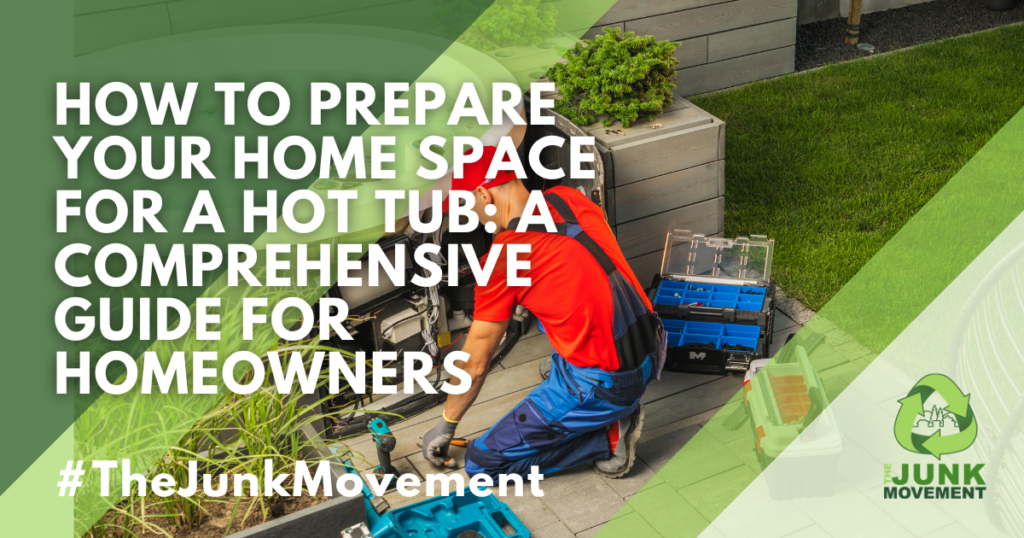Are you a homeowner considering the luxurious addition of a hot tub to your new abode? Congratulations! A hot tub can be a fantastic enhancement to your living space, providing relaxation, therapeutic benefits, and a great spot for social gatherings. However, preparing your home space for a hot tub requires careful planning and execution. In this guide, we will walk you through the essential steps to ensure your hot tub installation is smooth and successful.
Choosing the Right Location for Your Hot Tub
The first step in preparing your home space for a hot tub is to choose the right location. Several factors need to be considered to make the best choice. Accessibility is crucial; ensure the location is easily accessible for delivery and maintenance. Privacy is also important, so choose a spot that offers privacy from neighbors and the street view. Additionally, proximity to utilities is essential since the location should be near electrical and water sources. Popular locations for hot tubs include:
- Backyard: Provides a serene outdoor environment.
- Deck or Patio: Convenient and often structurally suitable.
- Indoor Spaces: Requires proper ventilation and waterproofing.
Evaluating the Structural Integrity of Your Hot Tub Site
Before installing your hot tub, evaluate the structural integrity of the chosen location. The ground support is critical, with a concrete slab being often recommended for its durability. If you plan to place the hot tub on a deck, ensure it can support the weight of the filled hot tub and occupants. It is wise to hire a structural engineer to inspect and confirm the stability and safety of the installation site. Their expertise can provide peace of mind that your hot tub will be secure.
Ensuring a Proper Electrical Setup for Your Hot Tub
Ensuring a proper electrical setup is another essential step. Hot tubs require a dedicated GFCI (Ground Fault Circuit Interrupter) protected circuit, typically operating on a 220-240V circuit. Hiring a licensed electrician is crucial to ensure the electrical setup meets local codes and safety standards. Their professional installation will help prevent electrical hazards and ensure your hot tub operates efficiently.
Planning for Water Supply and Drainage for Your Hot Tub
Planning for water supply and drainage is also necessary. Most hot tubs are filled using a standard garden hose, so ensure a convenient water source is nearby. Consider installing a water filtration system to maintain clean and clear water in your hot tub. Additionally, ensure the area around the hot tub has sufficient drainage to prevent water accumulation. A drain hose can help direct water away from your home’s foundation, protecting it from potential water damage.
Enhancing Your Hot Tub Area with Landscaping and Aesthetics
Incorporating landscaping and aesthetics around your hot tub can enhance your overall experience. To enhance privacy, you can install fencing or use tall plants and shrubs to create a natural privacy screen. Creating a relaxing atmosphere with ambient lighting and constructing clear pathways leading to the hot tub for safe access can significantly improve the ambiance and usability of your hot tub area.
Understanding Hot Tub Maintenance Requirements
Understanding maintenance requirements is vital to keep your hot tub in top condition. Regular maintenance includes testing the water for chemical balance and cleaning filters and the tub surface to prevent the buildup of debris and bacteria. Seasonal care, such as winterizing your hot tub if you live in a cold climate, is essential to prevent freezing damage. Using a durable cover can keep debris out and retain heat, making maintenance easier.
Safety Considerations for Hot Tub Installation
Safety considerations are paramount when installing a hot tub. Installing safety barriers such as fencing and gates can prevent unsupervised access, especially if you have children or pets. Using locking covers can secure the hot tub when not in use. It is also advisable to keep a first aid kit nearby and have emergency contact information readily available in case of any incidents.
Checking Permits and Regulations for Hot Tub Installation
Before proceeding with the installation, check local regulations and obtain any necessary permits. Verify if a permit is required for hot tub installation in your area and ensure compliance with local zoning laws and homeowners association guidelines. Proper adherence to regulations will help you avoid any legal issues.
Preparing for Hot Tub Delivery Day
On delivery day, prepare by clearing the access path of obstacles like furniture, garden tools, and debris. Measure doorways and gates to confirm that the hot tub can fit through all access points. Coordinate with installers, confirm the delivery time, and be present to supervise. Providing any necessary assistance to the installers can help ensure a smooth installation process.
Enjoying Your New Hot Tub
Once your hot tub is installed, the initial setup involves filling the hot tub with water and allowing it to reach the desired temperature. Add the necessary chemicals to balance the water. Finally, invite friends and family to celebrate and enjoy your new hot tub. Take time to relax and enjoy the therapeutic benefits of your new addition.
Conclusion
In conclusion, preparing your home space for a hot tub involves careful planning and attention to detail. By following these steps, you can ensure a smooth installation and enjoy all the benefits that a hot tub has to offer. Remember, The Junk Movement is here to assist with any cleanup or removal needs during your preparation process. Enjoy your new oasis of relaxation!




